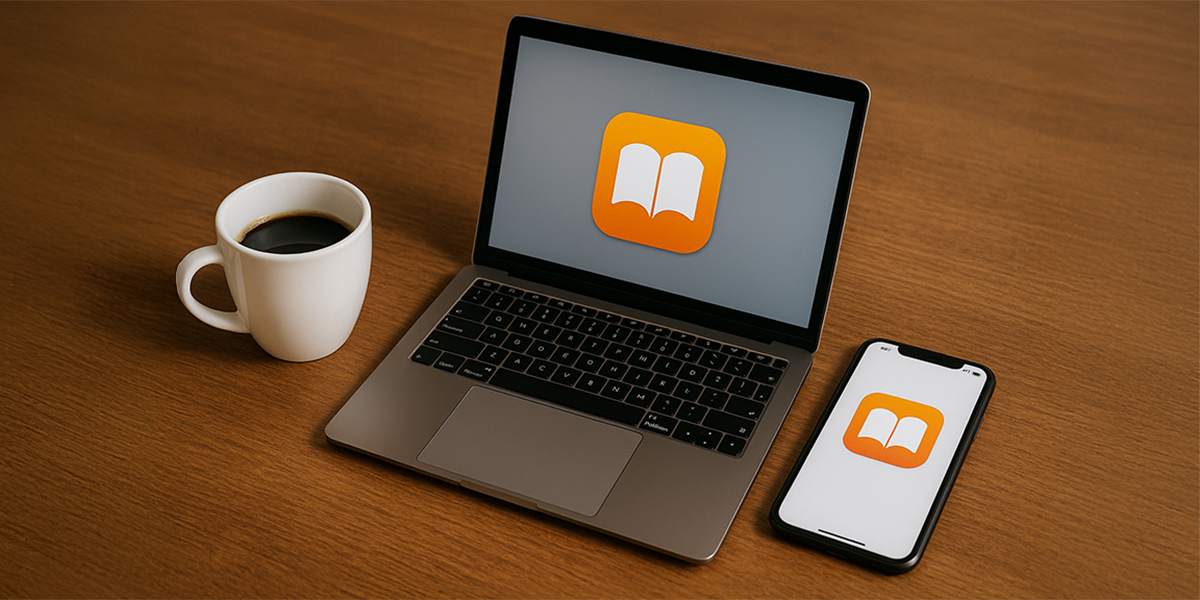This morning, as I sipped my black coffee (no cream, no sugar—you know how I do), I caught myself staring at a folder full of old MP3s I’d recorded years ago. Some were voice notes, others were chapters of that book idea I’ve yet to finish, and a few were just solid life reflections I didn’t want lost to time.
That’s when it hit me: Why not turn them into a full-blown audiobook I could access from my iPhone or MacBook?
Not a podcast. Not a playlist. A real audiobook—clean, searchable, pause/resume friendly, and stored inside Apple’s Books app.
So, during one of my mid-morning work breaks—you know, the kind where I start brainstorming side hustle ideas or AI automation flows—I got to work.
And right before I left the supermarket later that day (where I totally forgot the olive oil again), I had already created my own personal audiobook.
Want to do the same? Here’s how I did it step-by-step:
Actions I’ve taken
☑️ 1 Organize Your MP3s
Toss all your audio files into a single folder. Make sure they’re in order, especially if they follow a chapter or segment sequence.
Toss all your audio files into a single folder. Make sure they’re in order, especially if they follow a chapter or segment sequence.
☑️ 2 Download Audiobook Builder
This is a Mac app that does the heavy lifting. You’ll find it in the App Store.
This is a Mac app that does the heavy lifting. You’ll find it in the App Store.
☑️ 3 Create a New Project
Launch the app and start a fresh audiobook project. Name it something cool like “Myrin’s Mind Unlocked” or whatever fits your vibe.
Launch the app and start a fresh audiobook project. Name it something cool like “Myrin’s Mind Unlocked” or whatever fits your vibe.
☑️ 4 Add Files
Drag all your MP3s into the project. Double-check the order—this step is like arranging chapters in a book.
Drag all your MP3s into the project. Double-check the order—this step is like arranging chapters in a book.
☑️ 5 Add Chapters
The app will auto-create chapters based on each file. You can merge them or rename them however you like.
The app will auto-create chapters based on each file. You can merge them or rename them however you like.
☑️ 6 Add Cover Art & Metadata
Upload a cover image and enter your name, title, etc. Think: mini publishing moment.
Upload a cover image and enter your name, title, etc. Think: mini publishing moment.
☑️ 7 Choose Audio Quality
I stuck with “High,” because I like hearing myself crystal clear (don’t judge).
I stuck with “High,” because I like hearing myself crystal clear (don’t judge).
☑️ 8 Build the Audiobook
Click “Build” and let it process. The output will be a tidy .m4b file—Apple’s native audiobook format.
Click “Build” and let it process. The output will be a tidy .m4b file—Apple’s native audiobook format.
☑️ 9 Import to Apple Music
Open your Music app (formerly iTunes), drag the M4B in, and check the “Audiobooks” section.
Open your Music app (formerly iTunes), drag the M4B in, and check the “Audiobooks” section.
☑️10 Sync with iPhone
Plug in or use Wi-Fi sync. Make sure “Sync Audiobooks” is selected.
Plug in or use Wi-Fi sync. Make sure “Sync Audiobooks” is selected.
☑️11 Listen in Apple Books
Fire up the Apple Books app on your iPhone and boom—your custom audiobook is sitting there waiting for you.
Fire up the Apple Books app on your iPhone and boom—your custom audiobook is sitting there waiting for you.
Audiobooks don’t just have to be published masterpieces from big-name authors. They can be personal archives, creative projects, training guides, family interviews, or your own motivational talks. For me, it’s a blend of all of that—and more.
Now, I’ve got a personal audiobook I can listen to while walking, working out, or driving across town for a client meeting.
Next time you’re sitting on gold in audio form—or just want to hear your own wisdom played back to you—give this a try. You’ll thank yourself during your next coffee break.
Until next time,
—Myrin
